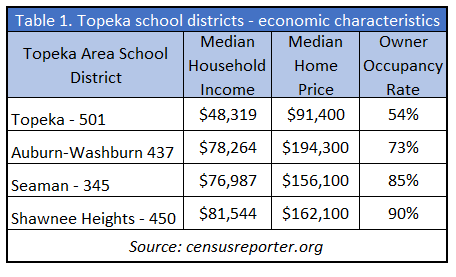Information from the Urban Institute, in a research project titled Dividing Lines, reveals how gerrymandering of attendance zones within school districts reinforces and perpetuates segregation along racial lines in public schools in urban areas across the country. The Urban Institute analyzed student populations in which there was a substantial difference in the racial make-up of adjoining attendance areas within a district. They conclude, “with just small changes to these (attendance) boundaries, district officials could create more integrated schools and potentially increase opportunities for Black and Hispanic students.” As helpful and necessary it is to point out how segregation along racial lines still flourishes within school districts, especially in the nation’s cities, the Institute misses the bigger picture in how to ameliorate the problem.
The Urban Institute, like many of those who study public education, takes the district system as a given, the stasis. But the problem isn’t just that there is structural segregation within school districts, there is structural segregation between and/or among adjoining school districts. The actual culprit is the school district system itself, especially for those low income/minority families who haven’t the means to escape the artificial barriers of those invisible political lines.
Mike O’Neal, the former Speaker of the Kansas House, said, “…We do have school choice in Kansas, we have school choice for those who can afford it.” Those families can afford it via higher home prices and property taxes in schools perceived as better.
Take the city of Topeka, for example. The Capital City is home to four school districts: Topeka Public Schools (USD 501), Auburn Washburn (USD 437), Seaman (USD 345), and Shawnee Heights (USD 450). A glance at economic and demographic characteristics shows a blunt contrast between three districts – Auburn Washburn, Seaman, Shawnee Heights – and Topeka Public Schools. According to the latest statistics from Census Reporter, Table 1 shows how much lower household income, home prices, and owner/occupancy rates are within Topeka Public Schools than the other three. And according to the Census Reporter data, the USD 501 poverty rate among school-age children is about 1½ times the Shawnee County rate.
(USD 437), Seaman (USD 345), and Shawnee Heights (USD 450). A glance at economic and demographic characteristics shows a blunt contrast between three districts – Auburn Washburn, Seaman, Shawnee Heights – and Topeka Public Schools. According to the latest statistics from Census Reporter, Table 1 shows how much lower household income, home prices, and owner/occupancy rates are within Topeka Public Schools than the other three. And according to the Census Reporter data, the USD 501 poverty rate among school-age children is about 1½ times the Shawnee County rate.
 Table 2 shows that USD 501 has a significantly higher percentage of non-white students than the other three.
Table 2 shows that USD 501 has a significantly higher percentage of non-white students than the other three.
Couple these economic and demographic indicators with the 2020-21 state assessment results and a disturbing intersection is formed. Looking at the four performance levels (Level 1 is lowest, Level 4 is highest) it is clear the minority and low-income students perform much better in Auburn Washburn, Seaman and Shawnee Heights than in the Topeka Public Schools district. Even the not-low-income students in USD 501 perform at proficiency rates (Levels 3 and 4) of about half of the other three. It isn’t that these kids cannot learn, it’s that they have limited opportunities.
 All this data shows how entwined economics and school segregation is. Given the distribution of the real estate market and income levels in Topeka, most families living within the confines of the Topeka Public School district do not have the economic wherewithal to escape the low-performing schools they are forced to attend, due to the rigidity of district boundaries.
All this data shows how entwined economics and school segregation is. Given the distribution of the real estate market and income levels in Topeka, most families living within the confines of the Topeka Public School district do not have the economic wherewithal to escape the low-performing schools they are forced to attend, due to the rigidity of district boundaries.
So, what is the solution?
The answer lies in parental choice. It is unconscionable that in this country students and families are stuck attending underperforming schools because economics precludes them from moving to a higher performing district. The most effective way to achieve educational mobility would be to allow public money to follow the student, whether to a different public school or a private school.
The irony that shouldn’t be lost on this example is that it was the very city of Topeka that was the subject of the historic Brown v. Board of Education case that struck down the practice of racial segregation in the nation’s public schools. That decision was over a half-century ago, but de facto segregation based on economic factors is alive and well. It’s way past time to take the intent of Brown and give the power to the parents to overcome the stubborn will of government bureaucracy’s status quo.





